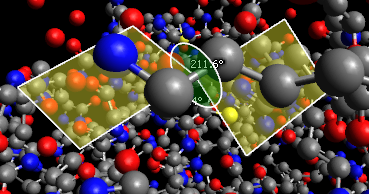Mail spam is annoying. But spam on a wiki is even more annoying. If you've spent your free time writing documentation, there's no way you want to see junk text or link spam inserted into the middle of your flowing prose. In an
earlier article, I described how to install a Mediawiki wiki on SourceForge. After a while you will start to get your first spam. And so the battle begins...
Wikis don't look very impressive as a website, but for an open source project they are a great way of maintaining documentation. Nobody likes writing documentation, which is why it needs to be made as easy as possible. For example, if a user mails the project mailing list with a question about installing that software, it usually means that the documentation needs to be updated and this can be done in about a minute. (On the other hand, if a project has a frequently-asked questions page, it means that they couldn't be bothered improving the documentation.)
Fortunately, spam can simply be controlled using permissions (thanks to
David Wild for some of these suggestions). To begin with, make sure you keep an eye on the Recent Changes feed on your wiki (use an RSS reader). (As an aside, if your Recent Changes feed is broken, a possible cause is that you have installed an extension and included a rouge blank line after the final "?>" - this happened to me.)
Next you need to edit the permissions in LocalSettings.php to disable anonymous edits and disable account creation except by users who already have accounts. Of course, the admin is always allowed to do whatever. I'll explain the rationale for this below, but first here are the settings:
# No anonymous editing allowed
$wgGroupPermissions['*']['edit'] = false;
$wgGroupPermissions['user']['edit'] = true;
$wgGroupPermissions['sysop']['edit'] = true;
# Only users with accounts can create accounts
$wgGroupPermissions['*']['createaccount'] = false;
$wgGroupPermissions['user']['createaccount'] = true;
$wgGroupPermissions['sysop']['createaccount'] = true
On one of the wikis I am involved with on SourceForge, we had already disabled anonymous edits. However, anyone could create an account. At some point the spammers upgraded their spam software and were then able to create accounts on the wiki. Since the RSS feed for recent changes was not working (for the reason described above), it was three days and about 1000 spam accounts later before I realised the problem. At that stage it was too late to implement the solution I described above. Instead, I created a new group 'human', added the 10 or so real accounts to that group and gave them permissions while simultaneously removing all permissions from the regular 'user' account.
# Only 'humans' can edit
$wgGroupPermissions['*']['edit'] = false;
$wgGroupPermissions['user']['edit'] = false;
$wgGroupPermissions['human']['edit'] = true;
$wgGroupPermissions['sysop']['edit'] = true;
# Only 'humans' can create accounts
$wgGroupPermissions['*']['createaccount'] = false;
$wgGroupPermissions['user']['createaccount'] = false;
$wgGroupPermissions['human']['createaccount'] = true;
$wgGroupPermissions['sysop']['createaccount'] = true;
Bye-bye spam. Of course, I still had to revert about 30 edits...:-/
Image credit:
Spam wall by
freezelight
 R is a programming environment containing every known statistical method; however, it's ugly and difficult to program in. Python has only a small number of statistical methods (which are available through SciPy), but it's elegant and easy to program in. Both have graphing libraries which leave a lot to be desired in terms of ease of use, but the graphs from Python's matplotlib are a lot more polished. So, I'd like to use R from Python...
R is a programming environment containing every known statistical method; however, it's ugly and difficult to program in. Python has only a small number of statistical methods (which are available through SciPy), but it's elegant and easy to program in. Both have graphing libraries which leave a lot to be desired in terms of ease of use, but the graphs from Python's matplotlib are a lot more polished. So, I'd like to use R from Python...


